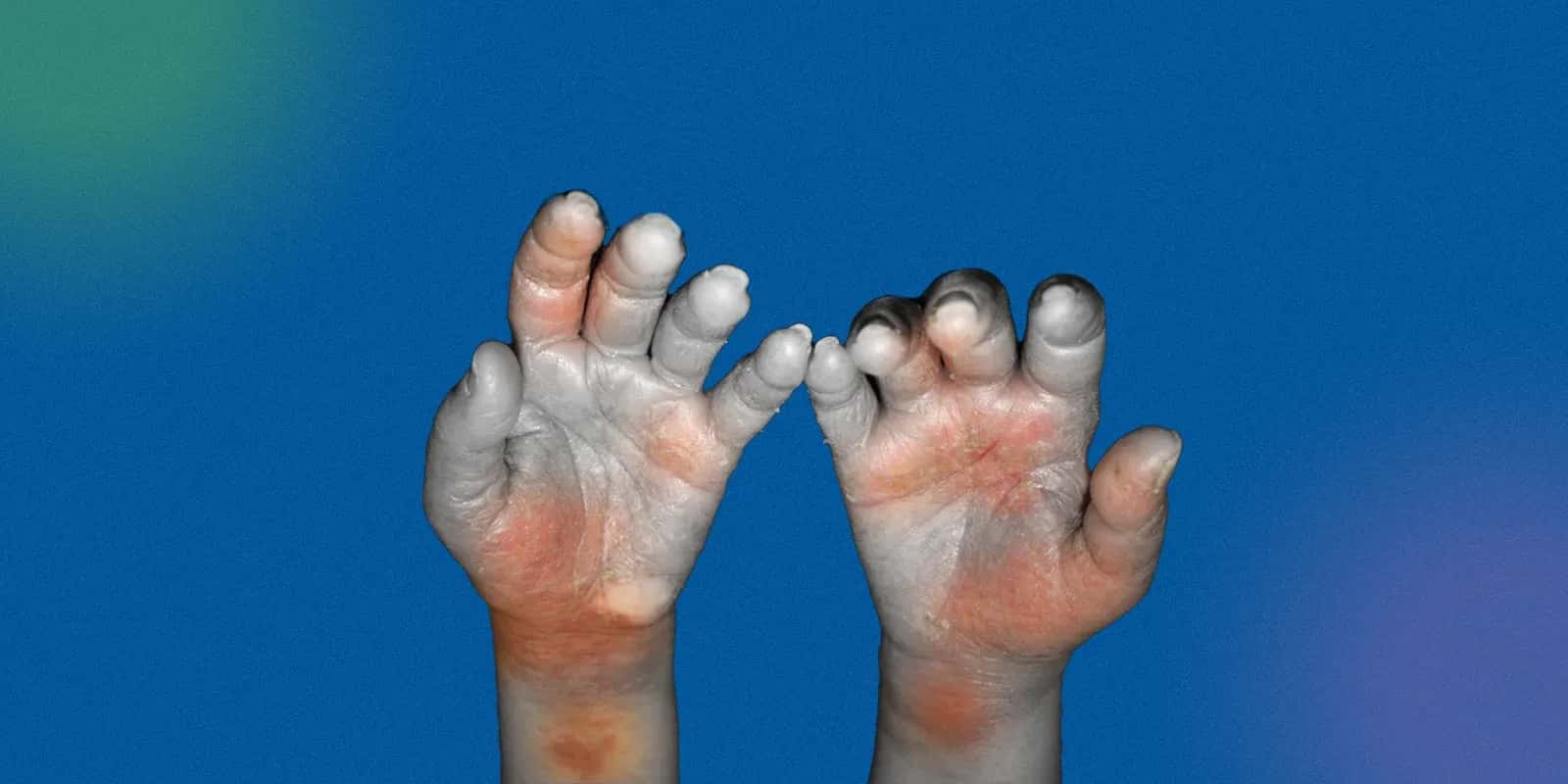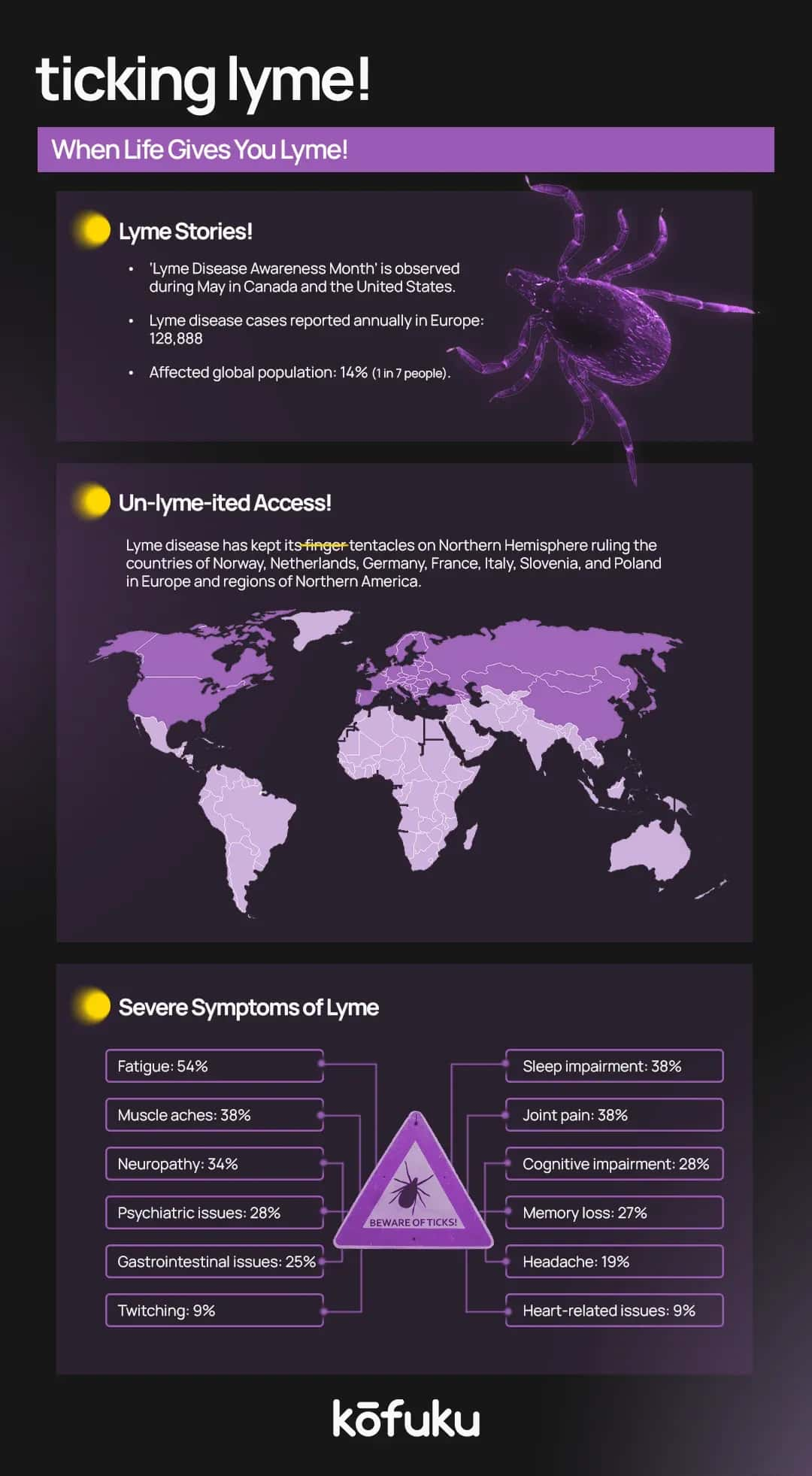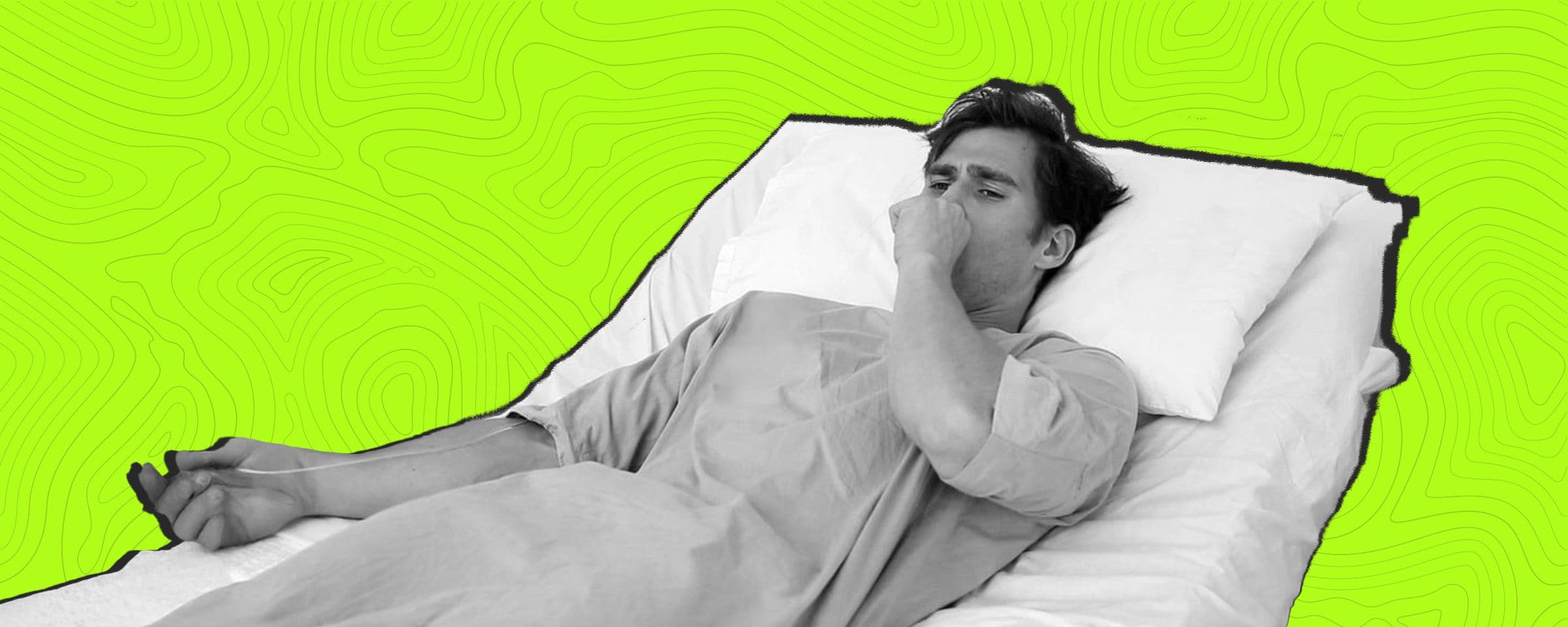Lyme Disease: Symptoms, Causes, Diagnosis, Treatment


Introduction
One might think supermodels have it all—glamour, fashion shows, exotic vacations, and perfect Instagram feeds. But think again.
Bella Hadid, one of the biggest names in the fashion industry, has been battling a relentless enemy: Lyme disease. And she’s not alone. This tricky illness doesn’t care about your bank balance, beauty or social status. It can creep into anyone’s life, often without warning.
So, what exactly is Lyme disease, and why is it such a nightmare to diagnose and treat? Let’s break it down.
What Exactly Is Lyme Disease?
So you’re enjoying a sunny hike in a beautiful green park. A tiny, uninvited guest, a black-legged tick, like the series Parasyte (2024), latches onto your skin.
This little pest is carrying Borrelia burgdorferi, the bacteria that causes Lyme disease. If left undetected, that bacteria gets cozy in your body and starts wreaking havoc.
And the worst part? Lyme disease is the ultimate master of disguise, AN IMPOSTER. It mimics other illnesses, making it notoriously difficult to diagnose.
Symptoms for Lyme Disease
If you’ve been bitten by the tick that carries the disease, you may notice a small red rash that grows slowly into the shape of a bull’s eye. But let me break it down more for you -
Lyme disease symptoms usually appear within three to thirty days after a tick bite. It is divided into three phases :
1) The first stage of the disease is called early localised Lyme disease
The symptoms are fever, headache, chills, fatigue, muscle ache, or joint stiffness. Sometimes, swollen lymph nodes may occur instead of the regular rash.
You need to know that the reddish rash or skin lesion that forms is known as Ezythema Migraines (EM). This particular rash can range in size from that of a coin to a football or more.
And as infection spreads, these rashes can appear at different places on your body.
The rash may feel warm to the touch and is prevalent in at least 70-80% of infected people.
2) The second phase is called the early disseminated disease
If you weren’t bothered by the first phase, you should start worrying about the second because it is much more serious.
This phase is literally a pain in your a**e because it makes sure to tag along with the first phase symptoms. So, now that you have the double combo, let’s talk about the symptoms.
Be prepared to find rashes on different regions of your body, neck stiffness, pain around the back, hips and legs, weakness in hands and feet, and immune activity in the heart, causing irregular heartbeats.
3) Stage three is also known as late disseminated disease
The most common symptoms of this stage are arthritis, brain fog or memory loss, nerve damage, and shortness of breath. It might even cause a skin condition known as acrodermatitis chronic atrophicans.
There may be some form of skin discolouration and swelling around your hands or feet. But don't worry—this happens months or years after the tick bite. Make sure to get treatment before it reaches this stage.

How Common Is Lyme Disease?
According to the Centers for Disease Control and Prevention (CDC), Lyme disease is the most common tick-borne illness in the United States. About 30,000 cases are reported each year. But hold on, this isn’t confirmed either. It is estimated that as many as 476,000 people may have developed Lyme disease since the earlier numbers do not include every case.
Anyway, I should probably stop with the sad numbers and talk about good things for a change. For example, in August 2022, a Lyme disease vaccine developed by American pharma giants Pfizer in collaboration with Valneva entered late-stage clinical trials, indicating that a vaccine could be approved soon (YIPPEE!).
But an extra note: If you remove a tick within 24 hours of encountering it, your chances of getting Lyme disease are greatly reduced. Lyme disease is typically transmitted after a tick has been attached for more than 24 hours.
Diagnosis and Treatment of Lyme Disease
Caught early? You’re in luck! A few weeks of antibiotics can clear it up. But if Lyme disease goes unnoticed for long, it can get tricky.
The diagnosis is based on the symptoms and an exposure history. Physical signs, such as a characteristic rash, swelling of the joints, or enlarged lymph nodes, can also be helpful in determining the diagnosis. A blood test is another method, but it has its limitations.
Some people even experience a post-treatment Lyme disease syndrome, or PTLDS. In this case, patients who have had Lyme disease still suffer from persistent symptoms, such as fogginess, difficulty thinking, fatigue, and joint pains, for six months or longer, even after completing treatment.
PTLDS is still a mystery. There are several hypotheses to it, such as infections and autoimmune responses.
But here are some ways you can prevent it, as there is no permanent treatment other than antibiotics.
-
Wear long sleeves and pants, especially if you live in grassy lands.
-
Use bug spray.
-
Tick checks before getting inside the house.
-
Showering and doing laundry immediately.
-
Do not pick the tick with bare hands or crush it, as bacteria may spread; instead, use tweezers.
-
Make sure your pets are not carriers of the tick.
-
Wear lighter shades of clothes so you can pick on them easily.
-
Avoid open-toe sandals.
-
Try avoiding areas that could be infested with ticks and walk in clear pathways.

Conclusion
Lyme disease is a sneaky, frustrating illness that can turn life upside down. Bella Hadid’s openness about her struggle has helped raise awareness, reminding us that anyone can be affected. But the good news is that you can ‘tick’ Lyme disease off your worry list with early detection and the right precautions.
So, next time you’re out in nature, enjoy the adventure, but watch for those tiny hitchhikers!.
FAQs
What are the early symptoms of Lyme disease?
Early symptoms include a bullseye - shaped rash, fever, chills, headaches, muscle aches and extreme fatigue (often mistaken for flu).
Can you have Lyme disease without a rash?
Yes, not everyone develops the classic bullseye rash, which makes diagnosis tricky.
How is Lyme disease diagnosed?
Doctors use a combination of symptom evaluation, tick exposure, and blood tests to detect it. However, early tests may not always be accurate.
What happens when Lyme disease is left undiagnosed?
Untreated Lyme disease can lead to severe complications, including arthritis, nerve damage, and heart problems.
Can Lyme disease be transmitted from one person to the other?
No, Lyme disease does not spread through human contact, food or water. It only comes from infected tick bites.


10 Skin Diseases You Should Know About

5 Diseases That Affect Women: Awareness and Prevention Tips

Airborne Diseases: How to Stay Safe and Protect Your Health

